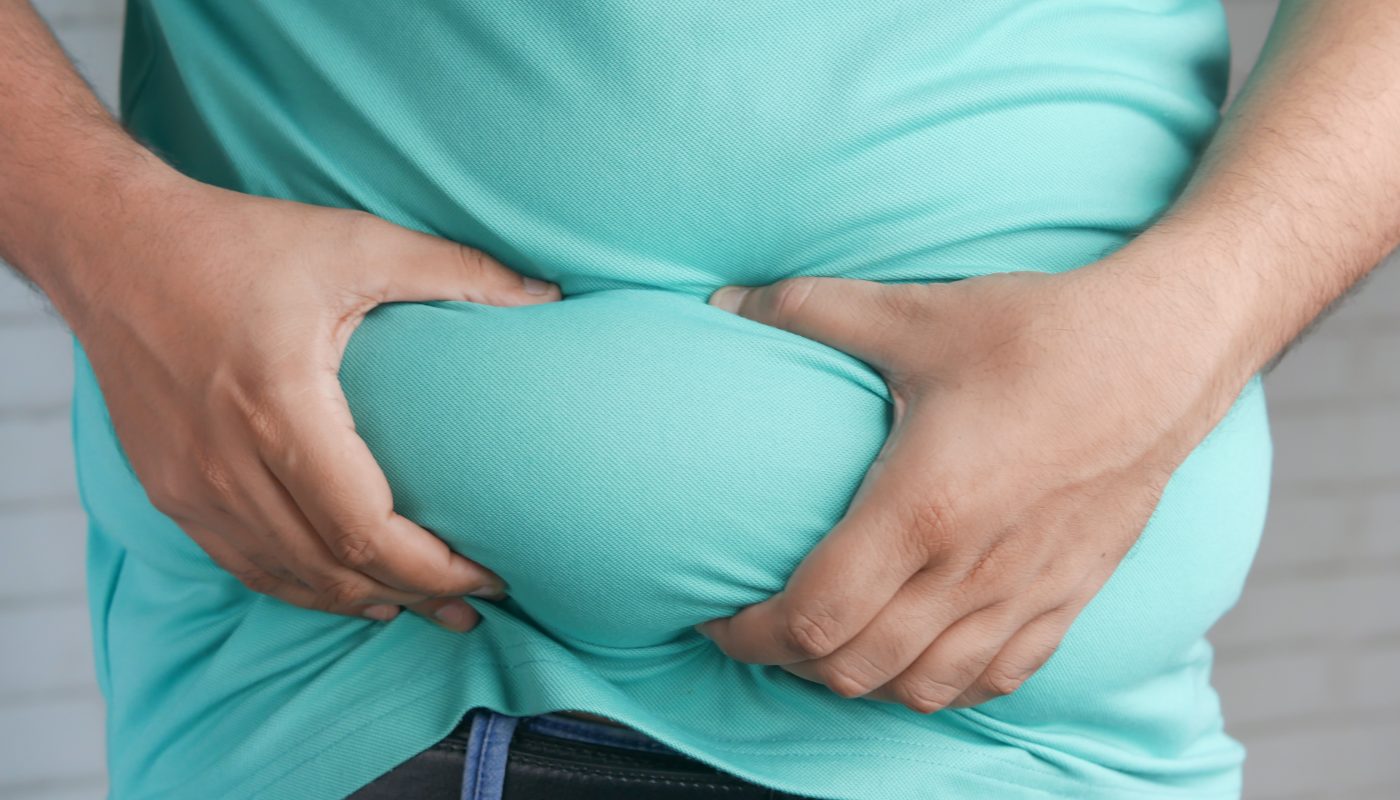The most optimal way to lose belly fat is to eat healthfully and exercise regularly. It can also help to write down what you eat daily to help you stay on track.
Losing abdominal fat, or belly fat, is a common weight loss goal. Fat has various functions in your body, including energy storage and hormone regulation. Having some body fat is healthy.
There are two main types of fat in the abdomen. Subcutaneous fat is the type that’s located just below your skin. This fat is stored all over your body, including the midsection.
The other type of fat in your abdominal area is called visceral fat. This fat is located deeper in your body, where it cushions the organs in your abdomen. Research has linked high amounts of this fat with conditions like type 2 diabetes and heart disease.
For this reason, losing excess visceral fat can have significant benefits for your health.
You can estimate your abdominal fat by measuring the circumference around your waist with a tape measure. Measures of above 40 inches (102 cm) in men and 35 inches (88 cm) in women are known as abdominal obesity.
It’s a popular myth that certain weight loss strategies can target visceral fat or abdominal fat. Currently, there’s no proven way to “spot reduce” fat in particular areas through diet or exercise.
Both weight gain and weight loss tend to happen across your whole body, but the specific areas you’ll notice changing first vary from person to person. Your unique pattern is likely influenced by your genes.
If you’re aiming to lose belly fat, healthy weight loss strategies are your best bet. Here are 6 evidence-based ways to lose fat, including abdominal fat.
1. Limit sugar and sugar-sweetened drinks
A diet high in added sugars may lead to excess abdominal fat.
Studies show that added sugar has uniquely harmful effects on metabolic health.
Numerous studies have indicated that excess sugar, mostly due to the large amounts of fructose, can lead to fat building up around your abdomen and liver.
Sugar is half glucose and half fructose. When you eat a lot of added sugar, the liver gets overloaded with fructose and is forced to turn it into fat.
Some believe that this is the main process behind sugar’s harmful effects on health. It increases abdominal fat and liver fat, which can lead to insulin resistance and various metabolic problems.
If you’re trying to reduce your calorie intake, you may want to limit liquid sugar in particular. The brain doesn’t seem to register liquid calories in the same way as solid calories, so when you drink sugar-sweetened beverages, you end up eating more total calories .
A study observed that children were 60% more likely to develop obesity with each additional daily serving of sugar-sweetened beverages.
Consider minimizing the amount of sugar in your diet and limiting your intake of sugary drinks. This includes sugar-sweetened beverages, sugary sodas, fruit juices, and various high sugar sports drinks.
Read the labels to make sure products do not contain refined sugars. Even foods marketed as health foods can contain significant amounts of sugar.
Keep in mind that none of this applies to whole fruit, which are extremely healthy and have plenty of fiber that mitigates the negative effects of fructose.
2. Eat more protein
Protein may be the most important macronutrient for weight loss.
Research shows it can reduce cravings by 60%, boost metabolism by 80–100 calories per day, and help you eat up to 441 fewer calories per day .
If weight loss is your goal, adding protein may be among the most effective changes you can make to your diet.
Not only can protein help you to lose weight, but it may also help you to avoid regaining weight.
There’s some evidence to suggest that protein may be associated with lower levels of abdominal fat. One study showed that people who ate more and better-quality protein had less abdominal fat.
Another study indicated that eating more protein was linked to a smaller gain in waist circumference over 5 years in women.
This study also linked refined carbs and oils to more abdominal fat and linked fruit and vegetables to reduced fat.
Many of the studies observing that protein helps with weight loss had people getting 25–30% of their calories from protein. Therefore, this may be a good range to try.
You can get more protein by increasing your intake of high protein foods such as whole eggs, fish, legumes, nuts, meat, and dairy products.
If you struggle with getting enough protein in your diet, you might consider adding a quality protein supplement to boost your total intake. But talk with your doctor before adding any dietary supplements to your routine.
When following a vegetarian or vegan diet, check out this article on how to increase your protein intake.
3. Consider a low carb diet
Following a very low carb or ketogenic diet can be an effective way to lose fat. However, these diets come with some potential risks, so they are not appropriate for everyone.
If the goal is to lose weight fast, some people reduce their carb intake to 50 grams per day, which is dramatically lower than the carb content of a typical U.S. diet. This puts your body into ketosis, a state in which your body starts burning fats as its main fuel.
When people cut out carbs, their appetite typically goes down and they lose weight.
More than 20 randomized controlled studies have now shown that very low carb diets sometimes lead to 2–3 times more weight loss than low fat diets.
This is true even when those in the low carb groups are allowed to eat as much as they want, while those in the low fat groups are calorie restricted.
Some of this weight loss is due to reductions in water weight, not fat loss. However, studies comparing low carb and low fat diets indicate that low carb eating specifically reduces fat in the abdomen.
This means that some of the fat lost on a low carb diet is likely to include visceral fat, a type of abdominal fat that’s been linked to health problems when present in high amounts.
Low carb diets can have many other health benefits besides just weight loss. For example, they can significantly improve health in people with type 2 diabetes.
However, be sure to talk with your doctor before starting a very low carb or ketogenic diet. This is especially important if you have any health conditions.
To ensure you’re getting all the nutrients you need on a restrictive diet like this one, it’s a good idea to consult a registered dietitian.
4. Eat fiber-rich foods
Dietary fiber is mostly indigestible plant matter.
Eating plenty of fiber can help with weight loss. However, the type of fiber is important.
It appears that mostly the soluble and viscous fibers have an effect on your weight. These are fibers that bind water and form a thick gel that “sits” in your gut.
This gel can dramatically slow the movement of food through your digestive system. It can also slow down the digestion and absorption of nutrients. The end result is a prolonged feeling of fullness and reduced appetite .
One review study found that an additional 14 grams of fiber per day were linked to a 10% decrease in calorie intake and weight loss of around 4.5 pounds (2 kg) over 4 months.
One 5-year study reported that eating 10 grams of soluble fiber per day was linked to a 3.7% reduction in the amount of visceral fat in the abdominal cavity.
This implies that soluble fiber may be particularly effective at reducing the deeper fat that surrounds the organs in your belly.
The best way to get more fiber is to eat a lot of plant foods, including vegetables and fruit. Legumes are also a good source, as well as some cereals, such as whole oats.
You can also try taking a fiber supplement like glucomannan. This is one of the most viscous dietary fibers, and studies suggest it can help with weight loss .
It’s important to talk to your healthcare provider before introducing this or any supplement to your dietary regimen.
5. Exercise regularly
Exercise is among the best things you can do to increase your chances of living a long, healthy life and avoiding disease.
Helping to reduce abdominal fat is among the amazing health benefits of exercise.
This doesn’t mean doing abdominal exercises, as spot reduction — losing fat in one spot — is not possible. In one study, 6 weeks of training just the abdominal muscles had no measurable effect on waist circumference or the amount of fat in the abdominal region ,
Weight training and cardiovascular exercise can reduce fat across the body.
Aerobic exercise — like walking, running, and swimming — can allow major reductions in visceral fat.
Another study found that exercise completely prevented people from regaining visceral fat after weight loss, implying that exercise is particularly important during weight maintenance.
Exercise can also lead to reduced inflammation, lower blood sugar levels, and improvements in other metabolic problems.
6. Track your food intake
Most people know that what you eat is important, but many don’t know specifically what they’re eating.
A person might think they’re eating a high protein or low carb diet, but without keeping track, it’s easy to overestimate or underestimate food intake.
Tracking food intake doesn’t mean you need to weigh and measure everything you eat. If you want to lose weight with dietary changes, tracking intake every now and then for a few days in a row can help you realize the most important areas for change.
Planning ahead can help you achieve specific goals, such as boosting your protein intake to 25–30% of calories or cutting down on added sugars.
Check out these articles for a calorie calculator and a list of free online tools and apps to track what you’re eating.




